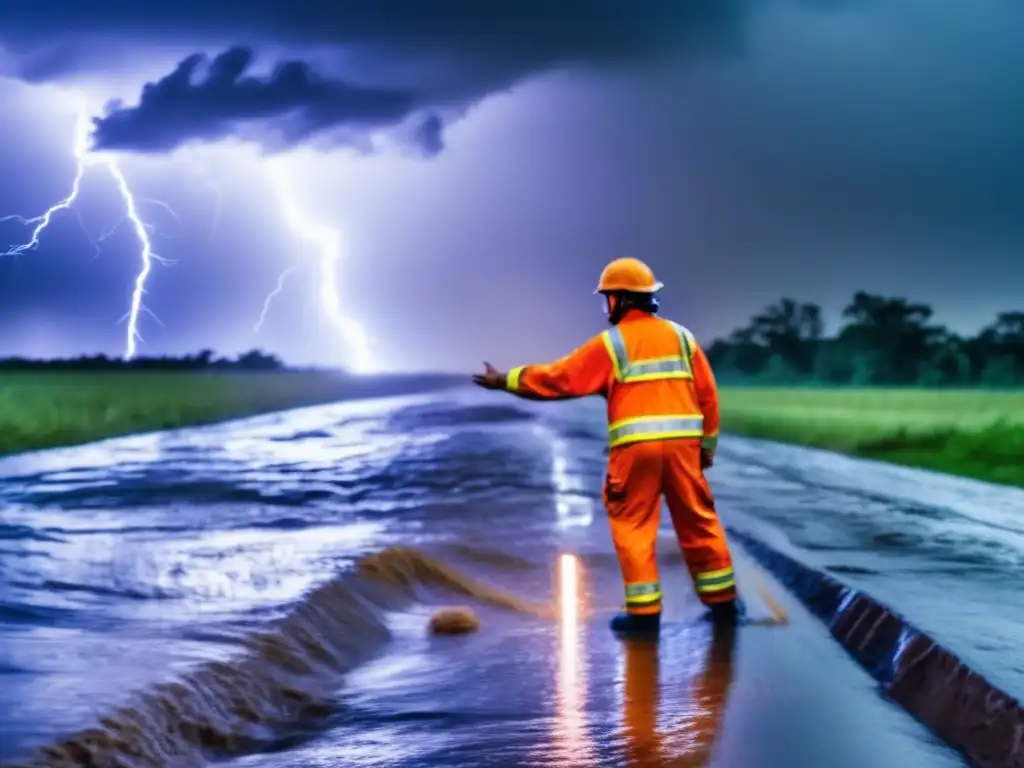Protecting Your Business During A Hurricane

Protecting Your Business During a Hurricane
Introduction
Hurricanes can cause significant damage to businesses, resulting in financial losses and operational disruptions. Therefore, it is crucial for business owners to prepare adequately for hurricanes to minimize the impact on their operations.
Assessing Risks and Vulnerabilities

Identify Potential Hazards
Businesses should identify potential hazards that could affect their operations during a hurricane, such as flooding, high winds, and power outages. This information can be obtained from local emergency management agencies or by conducting a hazard assessment.
Evaluate Building Vulnerabilities
Business owners should evaluate their building's vulnerabilities to hurricanes, including roof and window strength, structural stability, and flood resistance. Such evaluations can help determine what measures should be taken to protect the building and its contents.
Plan for Employees' Safety
Businesses should develop plans to ensure that employees are safe during a hurricane. The plan should include evacuation routes, shelter locations, and emergency contacts. Training sessions should be conducted before the hurricane season to ensure that employees are aware of the plan and know what to do during a hurricane.
Protecting Property and Assets

Secure the Building
Business owners should secure their building before the hurricane by boarding up windows, reinforcing doors, and securing loose items that could become projectiles. If flooding is expected, sandbags should be used to prevent water from entering the building.
Backup Data and Records
Businesses should back up their data and records to protect against loss or damage. This includes financial records, customer information, and other critical data. Backup copies should be stored in a safe location away from the primary site.
Protect Equipment and Inventory
Equipment and inventory should be protected by moving them to a safe location or covering them with protective materials. If possible, electronic equipment should be moved to a higher floor to prevent water damage.
Insurance Coverage

Review Insurance Policies
Business owners should review their insurance policies to ensure that they have adequate coverage for hurricane-related damages. This includes property damage, business interruption, and flood insurance. It is essential to understand what is covered and what is excluded to avoid surprises after the hurricane.
Document Everything
Any damages incurred during the hurricane should be documented thoroughly. Photographs and videos should be taken to support insurance claims. In addition, receipts and invoices should be kept to provide evidence of damages and losses.
File Insurance Claims Quickly
Insurance claims should be filed as soon as possible after the hurricane. The insurance company should be contacted immediately to begin the claims process. Delaying the process could result in a delayed payout, which could further harm the business.
Continuity Plan

Develop a Continuity Plan
Businesses should develop a continuity plan to ensure that operations can resume as quickly as possible after the hurricane. The continuity plan should include procedures for returning to normal operations, such as repairing or replacing damaged equipment, restocking inventory, and resuming services. The plan should also include details on how to communicate with employees, customers, and vendors.
Test the Plan
Business owners should test their continuity plan to identify any weaknesses or gaps. This can be done through tabletop exercises or simulations to evaluate how the plan would work in a real-life scenario.
Review and Update Regularly
Continuity plans should be reviewed and updated regularly, especially after a hurricane. Changes in the business environment or operations could require updates to the plan to ensure its effectiveness.
Frequently Asked Questions

-
Does business insurance cover hurricane damage?
It depends on the type of coverage a business has. Insurance policies should be reviewed to determine what is covered and excluded.
-
Can businesses continue operations during a hurricane?
In most cases, it is not safe for employees to remain at the workplace during a hurricane. However, with proper planning, businesses can resume operations quickly after the hurricane.
-
Is flood insurance necessary for businesses?
Business owners should consider purchasing flood insurance if their building is located in a high-risk flood zone.
-
What documents should be backed up before a hurricane?
Important documents that should be backed up include financial records, customer information, contracts, and other critical data.
-
How often should a business's continuity plan be reviewed?
Continuity plans should be reviewed and updated regularly, especially after a hurricane or changes in the business environment or operations.
Conclusion
Protecting a business during a hurricane requires careful planning and preparation. By assessing risks and vulnerabilities, protecting property and assets, reviewing insurance coverage, and developing a continuity plan, businesses can minimize the impact of hurricanes on their operations. This information is valuable for those living in hurricane-prone areas and for the general public to prepare for potential disasters.
We encourage readers to share their thoughts and feedback in the comments section below. Additionally, please consider subscribing to our email list for more informative articles about hurricanes and other disasters.
Additional Resources

 Reaching Out: Communicating With Emergency Services During A Hurricane
Reaching Out: Communicating With Emergency Services During A Hurricane Musical Calm: How Music Can Help During A Hurricane
Musical Calm: How Music Can Help During A Hurricane The Science Of Hurricanes: What’s Happening During The Storm
The Science Of Hurricanes: What’s Happening During The StormIf you want to discover more articles similar to Protecting Your Business During A Hurricane, you can visit the During the hurricane: category.
Leave a Reply

Articulos relacionados: